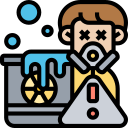Choose Healthier Homes: Alternatives to Hazardous Household Chemicals
Welcome to a cleaner, calmer way to care for your space. Chosen theme: Alternatives to Hazardous Household Chemicals. Explore simple swaps, science-backed tips, and real-life stories that protect your family, pets, and planet—without sacrificing results. Subscribe for weekly recipes, and share your favorite non-toxic swap in the comments to help others begin.
Vinegar and Baking Soda: The Dynamic Duo
White vinegar cuts mineral deposits and soap scum, while baking soda gently lifts grime without scratching. Use vinegar separately for descaling, then scrub with a baking soda paste. Avoid sealing them together in containers, as carbon dioxide buildup can cause leaks or spills.
Citrus Peels for Natural Degreasing
Save lemon or orange peels and steep them in vinegar for two weeks to extract limonene, a powerful natural degreaser. Strain, dilute, and spray on greasy stovetops. My grandmother swore by this sunny solution, and every batch smelled like weekend marmalade.
Castile Soap and Salt Scrub
Blend liquid castile soap with fine salt for a sink-safe scrub that leaves steel bright and glass streak-free. Add a few drops of tea tree oil if desired, and rinse thoroughly. Share your preferred salt-to-soap ratio so others can fine-tune their perfect texture.
Non-Toxic Laundry Solutions
Soap Nuts and Plant-Based Saponins
Soap nuts release natural saponins that lift dirt in warm water. Place four to six in a small cotton bag, toss into the drum, and reuse for several washes. They travel light, reduce waste, and work surprisingly well on everyday loads without synthetic surfactants.
Hydrogen Peroxide and Oxygen-Based Brighteners
A 3% hydrogen peroxide solution helps brighten whites without chlorine. Pre-treat stains, then rinse thoroughly. For larger loads, oxygen-based powder (sodium percarbonate) activates in hot water to release oxygen, tackling dinginess safely. Always test for colorfastness and follow garment care labels carefully for consistent results.
Fabric Softening with Vinegar and Wool Dryer Balls
Use a quarter cup of diluted white vinegar in the rinse to reduce residue and static, and add wool dryer balls to speed drying and fluff fibers. Scent the balls with a single drop of essential oil, if tolerated. Check appliance guidance and share your favorite scent blends.
Greener Disinfection and Sanitizing
For small surfaces and high-touch items, 70% isopropyl or ethanol can inactivate many microbes when left visibly wet for the full label contact time. Pre-clean dirty areas, ensure good ventilation, and keep away from flames. Avoid soft plastics that may haze; always spot test first.
Greener Disinfection and Sanitizing
A handheld steam cleaner can lift grime and sanitize sealed tile, grout lines, and glass using only water. Move slowly to allow heat to work, then wipe dry. Avoid unsealed wood and delicate finishes. Share before-and-after photos to inspire others to try heat instead of harsh chemicals.
Greener Disinfection and Sanitizing
Some plant-based products use thymol, derived from thyme, with registered disinfection claims when used as directed. They offer an alternative to bleach odors and residue. Read the label for contact time, use on non-porous surfaces, and tell us which brands or scents your household prefers.
Safer Pest Control at Home
Lightly dust food-grade diatomaceous earth in cracks, behind appliances, and along baseboards to disrupt the waxy coating of ants, roaches, and earwigs. Keep the powder dry, reapply after cleaning, and avoid breathing dust. It’s a patient, persistent method that wins with consistency.

Gentle Personal Care Swaps at Home
Cream Deodorant with Arrowroot and Shea
Whisk shea butter with arrowroot and a touch of coconut oil for glide. Add a small amount of baking soda only if your skin tolerates it. Essential oils are optional; patch test first. This gentle alternative avoids aerosol propellants and questionable antiperspirant additives.

Fresh Air Without Harsh Aerosols
Open windows on opposite sides to create a short cross-breeze, and run your range hood while cooking. Store paints and solvents outdoors or in sealed bins. This low-tech routine cuts indoor pollutants quickly, often outperforming perfumed sprays that only mask lingering smells.

